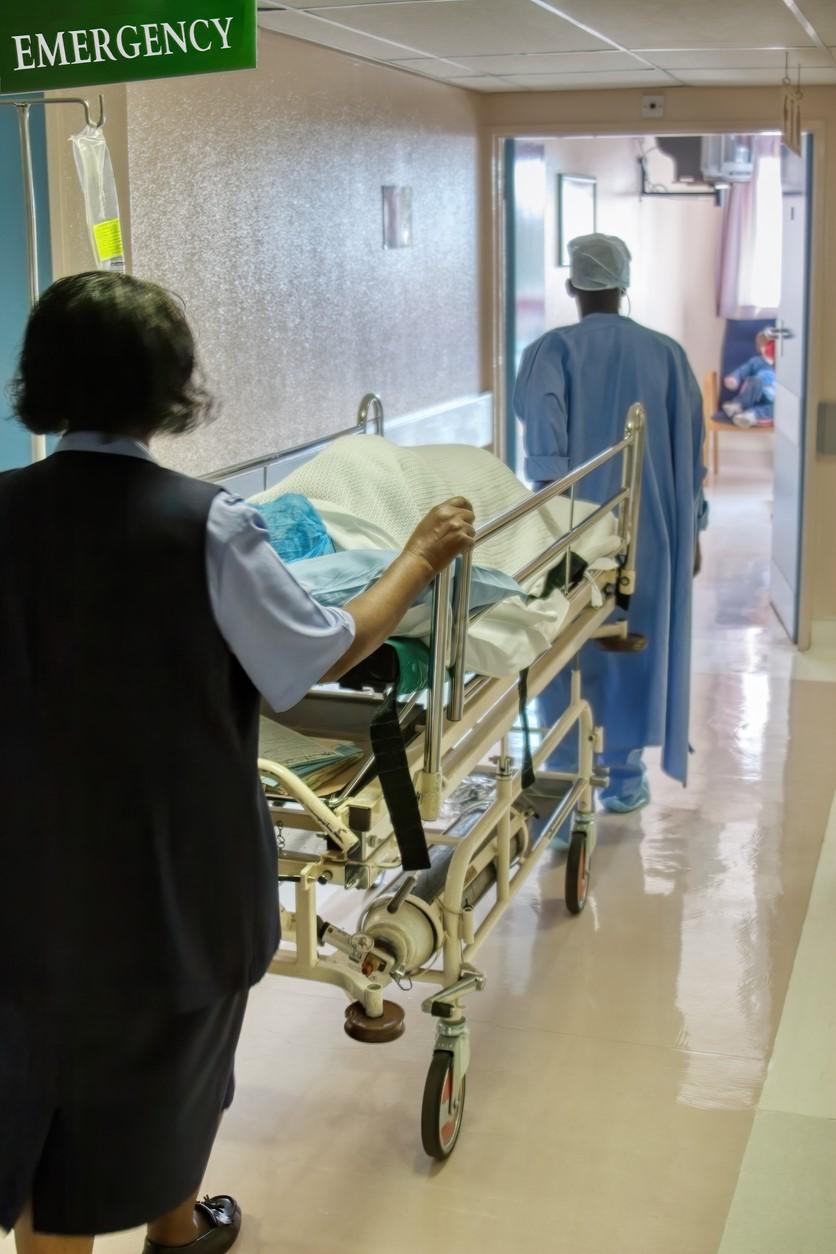A research letter today in JAMA Network Open shows that, in the first year of the COVID-19 pandemic, US hospitals dealing with patient surges held emergency-department (ED) patients in places like hallways while awaiting an inpatient bed for a median of 6.6 hours, far longer than the Joint Commission's 4-hour standard.
The Joint Commission, a US-based healthcare accreditation organization that sets standards for hospitals and other medical settings, has deemed ED boarding—or holding admitted patients in the ED, often in hallways, as they wait for a bed to open up—a patient safety risk.
Researchers from Yale University and the University of Michigan parsed aggregated monthly hospital data through a voluntary peer benchmarking service offered by the electronic health record vendor Epic Systems, Corp. from January 2020 to December 2021. More hospitals reported benchmarking data as the pandemic progressed, rising from 1,289 in January 2020 to 1,769 by study end.
The team analyzed visit volumes, hospital beds, hospital occupancy, ED boarding time (time from hospital admission to transfer to an inpatient unit), ED visit count, and national new daily COVID-19 infections.
Compromised patient care, privacy
When hospital occupancy surpassed 85%, ED boarding exceeded the Joint Commission's 4-hour standard 88.9% of the time. Median boarding time during months when hospital occupancy was higher than 85% was 6.58 hours, versus 2.42 in other pandemic months.
Among all hospitals, median ED boarding time was 2.0 hours (5th to 95th percentile, 0.93 to 7.88 hours) in January 2020, 1.58 hours (0.90 to 3.51) in April 2020, and 3.42 hours (1.27 to 9.14) in December 2021.
Median hospital occupancy was highest in January 2020 (69.6%; 5th to 95th percentile, 44.3% to 69.6%), 48.7% (28.7% to 69.9%) in April 2020, and 65.8% (42.7% to 84.8%) in December 2021. Throughout 2020 and 2021, ED boarding increased even when hospital occupancy didn't rise above January 2020 levels.
Limited hospital resources have been associated with excess patient deaths, the study authors noted.
"Downstream harms [of ED boarding] include increased medical errors, compromises to patient privacy, and increased mortality," they wrote. "Boarding is a key indicator of overwhelmed resources and may be more likely to occur when hospital occupancy exceeds 85% to 90%."
The researchers said that ED boarding and crowding, which was a problem even before the pandemic, may have become further ingrained. "Future research should explore more complex measures like staffing variability and local outbreak burden," they wrote.
"Policy makers should address acute care system strain in future pandemic waves and other disasters to avoid further hospital system capacity strain and unsafe patient care conditions."




















